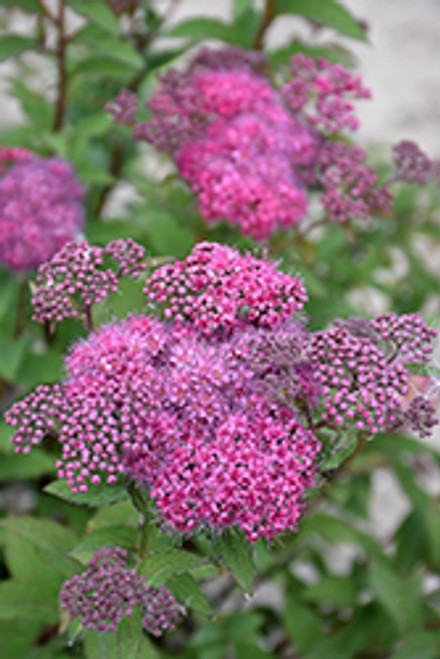Product Overview
Culture
Easily grown in average, medium moisture, well-drained soils in full sun. Tolerates light shade. Tolerates a wide range of soils. Prefers rich, moist loams. Remove faded flower clusters as practicable (light shearing is an option) to encourage additional bloom. Flowers on new wood, so prune in late winter to early spring if needed. Plants can be aggressive self-seeders, and have escaped gardens and naturalized in many areas of the eastern U.S. Plants will also spread in the garden by suckering.
Noteworthy Characteristics
Spiraea japonica, commonly called Japanese spirea, is a dense, upright, mounded, deciduous shrub that typically grows 4-6’ tall with a slightly larger spread. Leaves (to 3” long) are oval and sharply-toothed. Tiny pink flowers in flat-topped clusters (corymbs) cover the foliage from late spring to mid-summer, with sparse and intermittent repeat bloom sometimes occurring. Flowers are attractive to butterflies.
Genus name comes from the Greek word speira meaning wreath in reference to the showy flower clusters seen on most shrubs in the genus.
Specific epithet means of Japan, which is part of its native range.
‘Gold Mound’ is, as the cultivar name suggests, noted for its attractive golden foliage. It is cross between S. japonica ‘Alpina’ and S. japonica ‘Goldflame’ (parents originally described as S. japonica var. alpina and S. x bumalda‘Goldflame’). Leaves emerge golden in spring, but gradually fade to a gold-green as the summer progresses. Fall color may include interesting yellows, oranges and reds. This is a compact mounded cultivar that grows to 42” tall and to 48” wide. Small pink flowers in flattened corymbs (to 3” across) appear in late spring.
Problems
No known serious insect or disease problems. Spireas are generally susceptible to many of the diseases and insects that attack other rose family members, including leaf spot, fire blight, powdery mildew, root rot, aphids, leaf roller and scale.
Garden Uses
Specimen or group for rock gardens. Mass or group in shrub border. Low hedge for path and walkways. Incorporates well into foundation plantings.







